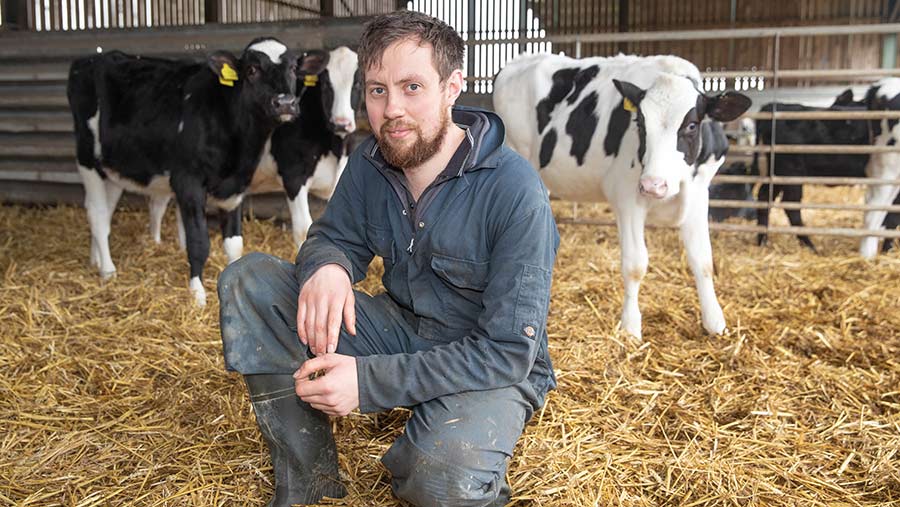Farmer Focus: Kicking myself about vaccine slip
 Tom Hildreth © Tim Scrivener
Tom Hildreth © Tim Scrivener By the start of July, we were about six weeks into calving, or half way. We have a summer calving bias of summer-born heifers, with beef at either end of this period and nothing born in February.
We have no ambition to be a tight block-calving herd, but we have found that having the heifer calves all born within four months of each other makes rearing them a lot easier.
At least, it would do if I hadn’t forgotten a major part of the vaccination programme, namely the rotovirus vaccine.
See also: Advice on weaning and creep feeding suckled calves
This has turned the enjoyable job of calf feeding into a nightmare of sad-looking calves, rehydration treatment and non-steroidal anti-inflammatories.
About half of the heifer calves have had symptoms, but the beef calves haven’t suffered at all, and I’m not sure why.
The beef calves spend their first two weeks in a stone-floor shed that houses young heifers in autumn and winter.
By contrast, the heifer calves spend the first weeks of life in clean, individual pens and then up to 12 weeks in purpose-built pens with concrete floors and walls that have been washed, disinfected and left for several months.
There is nothing like an outbreak of something that is easily preventable to guarantee the oversight isn’t repeated.
Fortunately, I think we’re over it now and four weeks ago we started vaccinating again so everything that has calved in the past two weeks has the antibodies.
It’s been a good grass-growing year for us. We took first cut a bit wet, but there was plenty of rain in the early regrowth stage to provide a good second cut, which filled another clamp.
Four weeks of regrowth is looking like a promising third cut.
Maize was knee high by 1 July, so that is nicely away, apart from the acre or so that didn’t germinate (owing to dry conditions) and then got pulled out by crows when it emerged towards the end of June.
We hosted 2,500 visitors for Open Farm Sunday again this year.
I am always amazed by the number of people who turn up, but with the promise of a sit in tractors and a combine, as well as cows, lambs and sheep shearing, I can’t blame them.

